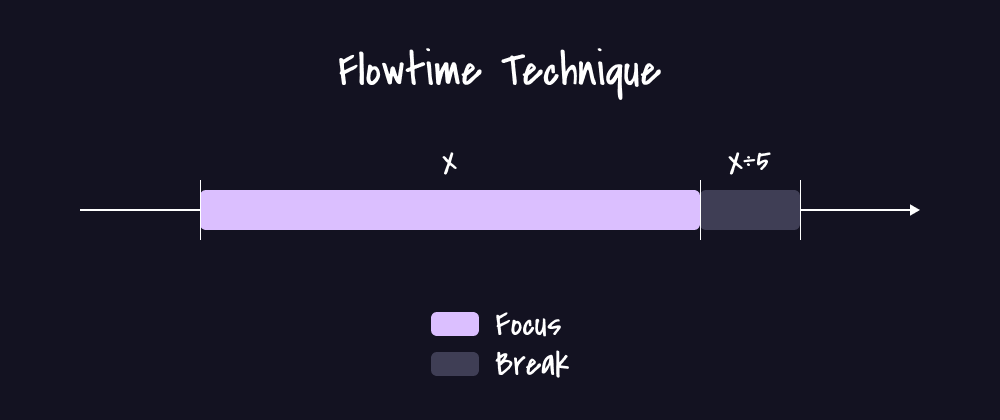Understanding the Pomodoro Technique
What is the Pomodoro Technique?
The Pomodoro Technique is a time management method. It was developed by Francesco Cirillo in the late 1980s.

It uses a timer to break work into 25-minute intervals. These intervals are called "pomodoros" and are separated by short breaks. You can learn more about it in our blog, Understanding The Pomodoro Technique: Simple Steps To Boost Your Focus.
Advantages and Limitations of Pomodoro
The Pomodoro Technique offers several benefits. It enhances focus, reduces procrastination, and improves study habits.
However, it has limitations. Its rigid structure may not suit everyone. Some tasks require longer, uninterrupted focus periods.
Effective Alternatives to the Pomodoro Technique
1. Time Tracking
Time tracking involves monitoring how you spend your time. It helps you understand your work habits.
Benefits of Time Tracking
Time tracking increases awareness of time usage. It helps identify time-wasting activities.

It allows for accurate planning and enhanced accountability. By understanding where your time goes, it can help reduce stress by optimizing your schedule.
Tools for Time Tracking
Various tools can assist with time tracking. You can use apps like Toggl, Harvest, or Clockify. These tools offer insights into how time is spent across different projects.
2. Task Batching
Task batching involves grouping similar tasks together. This method helps tackle them consecutively.
How to Implement Task Batching
Identify similar tasks and categorize them. Allocate specific time blocks in your schedule for each category. This minimizes the mental overhead of switching between different types of work.
Pros and Cons of Task Batching
| Pros | Cons |
|---|---|
| Improves focus | Not appropriate for all tasks |
| Reduces procrastination | Limited flexibility |
| Streamlines workflow | Rigid schedule |
3. The 80/20 Rule (Pareto Principle)
The 80/20 rule, or Pareto Principle, suggests that 80% of results come from 20% of efforts. This principle helps prioritize tasks effectively.
Application of the 80/20 Rule
Identify the crucial tasks that yield the most significant impact. Focus on these high-value tasks to optimize productivity.
Examples of Prioritizing with the 80/20 Rule
A sales professional might find that 20% of clients generate 80% of revenue. They can then focus their efforts on these key clients. Using a priority matrix template can help visualize and manage these tasks effectively.
4. Eat the Frog Technique
The "Eat the Frog" technique encourages tackling the most challenging task first thing in the morning. It is inspired by a quote from Mark Twain.
Steps to Implement the Eat the Frog Technique
Identify the most critical task. Commit to working on it first before any other tasks. This creates a sense of accomplishment early in the day.
Advantages of the Eat the Frog Technique
This method increases productivity and reduces procrastination. It provides a clear focus and improves overall time management. Starting with the hardest task can make the rest of the day seem easier.
5. Time Blocking
Time blocking involves dividing your day into specific time slots for tasks. This creates a clear structure.
How to Effectively Use Time Blocking
List all tasks and allocate specific time blocks for each. Use a calendar to create a visual representation of your schedule.
Differences Between Time Blocking and Pomodoro
Time blocking allocates specific time periods for tasks. Pomodoro uses fixed 25-minute work intervals. Time blocking offers more flexibility in scheduling.
Innovative Focus Strategies for Productivity
1. Flowtime Technique
The Flowtime Technique is a flexible time management method. It allows you to work for as long as you can maintain focus.

It emphasizes working in a state of flow, taking breaks only when needed. This is ideal for creative or complex tasks.
Benefits of the Flowtime Technique
It offers flexible timing and customized breaks. It supports deep, uninterrupted work. This technique allows for real-time monitoring of focus.
2. Reverse Pomodoro
The Reverse Pomodoro inverts the traditional method. It emphasizes longer work intervals followed by shorter breaks.
How Reverse Pomodoro Works
Engage in a deep work session, ranging from 45 to 90 minutes. Follow this with a short, active break of 5 to 10 minutes. It is effective for deep thinkers and creative problem-solvers.
3. The Eisenhower Matrix
The Eisenhower Matrix helps prioritize tasks based on urgency and importance. It categorizes tasks into four quadrants.
Prioritization with the Eisenhower Matrix
- Urgent and Important: Do these tasks first.
- Important but Not Urgent: Schedule these tasks.
- Urgent but Not Important: Delegate these tasks.
- Not Urgent and Not Important: Eliminate these tasks.
This method improves decision-making and reduces stress.
4. Getting Things Done (GTD) Method
The Getting Things Done (GTD) method is a comprehensive approach to managing tasks. It involves capturing, clarifying, organizing, prioritizing, and engaging in productive work.
Steps to Implement GTD
Capture all tasks in a trusted system. Clarify the next action required for each. Organize tasks into categories.
Reflect on your lists regularly. Engage in tasks without worrying about others.
5. Timeboxing
Timeboxing involves allocating a fixed amount of time to complete a task. It sets a specific time limit and work on the task only during that period.
Difference Between Timeboxing and Time Blocking
Timeboxing sets a strict time limit for a task. Time blocking allocates specific time slots for tasks. Timeboxing is more rigid and focuses on completing a task within the set time.
Conclusion
Recap of Alternatives
We explored various alternatives to the Pomodoro Technique. Time tracking, task batching, the 80/20 rule, Eat the Frog, and time blocking were discussed. Innovative strategies like Flowtime, Reverse Pomodoro, Eisenhower Matrix, GTD, and timeboxing were also highlighted.
Encouragement to Experiment with Techniques
Each technique offers unique benefits. Experimenting with these methods can help you find what works best for you. Remember, productivity is about finding a balance that allows you to thrive in both personal and professional endeavors.
Key Takeaways:
- Time tracking helps you understand your work habits and optimize your schedule.
- Task batching improves focus by grouping similar tasks together.
- The 80/20 rule prioritizes high-value tasks for maximum impact.
- Eat the Frog encourages tackling the hardest task first to boost productivity.
- Time blocking creates a structured schedule, while timeboxing sets strict time limits for tasks.
